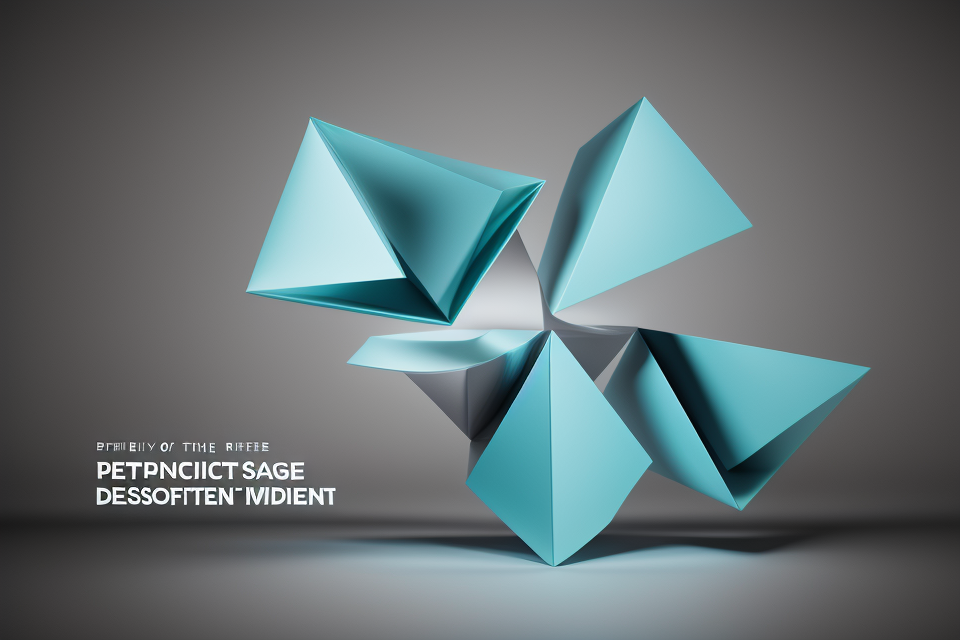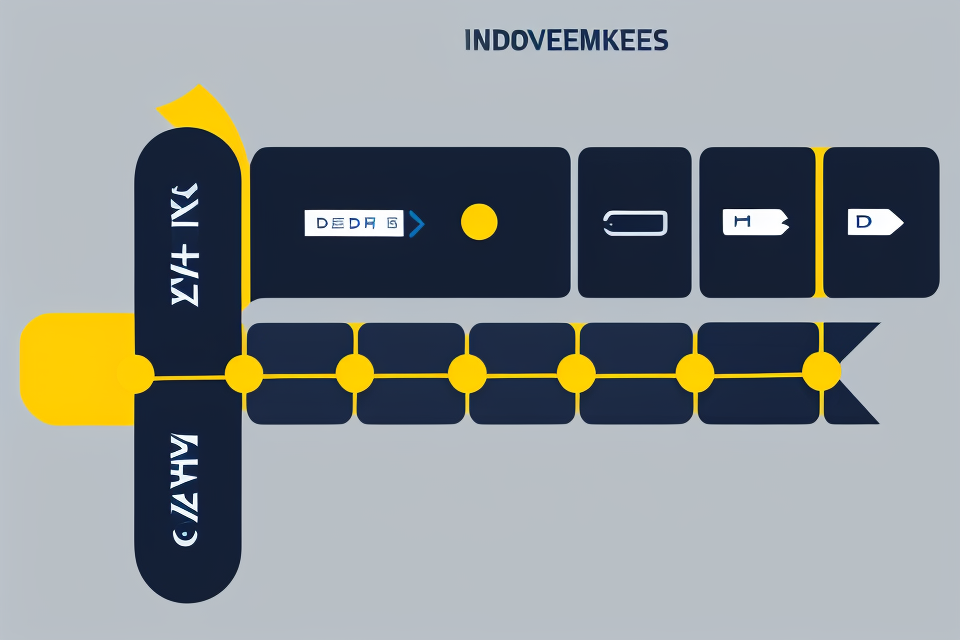Product development is a complex process that involves several stages. It is a crucial part of any business that aims to create new products or improve existing ones. To ensure success, it is important to understand the different stages of product development. In this guide, we will explore the five key stages of product development, known as the five Ds: Define, Develop, Design, Deliver, and Deploy. Each stage has its own set of objectives and challenges, and understanding them can help you navigate the product development process more effectively. Whether you’re a startup founder or a seasoned product manager, this guide will provide you with a comprehensive understanding of the five Ds and how they can help you bring your product to market.
Stage 1: Idea Generation
Identifying Market Needs
Conducting Market Research
Market research is a crucial aspect of identifying market needs. It involves gathering data on the target audience, competitors, and industry trends. This data can be collected through various methods such as surveys, focus groups, and online analytics tools.
Analyzing Customer Feedback
Customer feedback is another important source of information when identifying market needs. This feedback can be collected through various channels such as social media, email, and customer service interactions. It is important to analyze this feedback to identify common themes and pain points that customers may have.
Monitoring Industry Trends
Monitoring industry trends is also an important aspect of identifying market needs. This involves staying up-to-date with the latest technological advancements, changes in consumer behavior, and emerging market trends. This information can be gathered through industry publications, conferences, and networking events.
By conducting market research, analyzing customer feedback, and monitoring industry trends, companies can gain a better understanding of the needs and preferences of their target audience. This information can then be used to inform the development of new products or features that meet these needs and set the company apart from its competitors.
Brainstorming and Ideation
Brainstorming and ideation are crucial stages in the product development process, as they lay the foundation for the rest of the development cycle. The aim of these stages is to generate a range of ideas that can be evaluated and refined, leading to the creation of a product that meets the needs of the target market.
Techniques for generating ideas
There are a variety of techniques that can be used to generate ideas during the brainstorming and ideation stages. Some of the most popular techniques include:
- Mind mapping: This technique involves creating a visual diagram that maps out the main idea and its associated sub-ideas. It is a useful tool for visualizing connections between different ideas and can help to stimulate creative thinking.
- Role-playing: Role-playing involves assuming the role of a customer or user and imagining how they would interact with the product. This technique can help to identify potential problems and opportunities for improvement.
- Reverse engineering: This technique involves analyzing existing products to identify their strengths and weaknesses, and using this information to generate new ideas.
Encouraging creativity and innovation
To encourage creativity and innovation during the brainstorming and ideation stages, it is important to create an environment that fosters creativity and allows for open communication. This can be achieved by:
- Encouraging participation from a diverse range of team members
- Providing a safe space for ideas to be shared without fear of criticism
- Using techniques that stimulate creative thinking, such as mind mapping and role-playing
Evaluating and selecting ideas
Once a range of ideas has been generated, it is important to evaluate and select the most promising ideas for further development. This can be done by:
- Assessing each idea against a set of criteria, such as feasibility, market demand, and competitive advantage
- Conducting market research to validate the potential of each idea
- Using a voting system to determine which ideas should be pursued further
By following these steps, businesses can ensure that they are generating a range of ideas that have the potential to succeed in the market, and that they are selecting the most promising ideas for further development.
Stage 2: Concept Development
Defining Product Features
Identifying Core Features and Functionalities
When defining product features, it is crucial to identify the core features and functionalities that are essential to the product’s purpose. This involves conducting market research, gathering user feedback, and analyzing competitor products to determine what features are necessary for the product to be successful.
Prioritizing Features Based on User Needs
Once the core features and functionalities have been identified, it is important to prioritize them based on user needs. This can be done by conducting user surveys, focus groups, and usability testing to determine which features are most important to the target audience. By prioritizing features based on user needs, product developers can ensure that the product meets the needs of its intended users.
Developing a Product Roadmap
After identifying and prioritizing the core features and functionalities, product developers must create a product roadmap. This roadmap outlines the timeline for product development, including milestones, deadlines, and key deliverables. It also includes a detailed plan for how the product will be developed, including the resources needed and the team members responsible for each task. The product roadmap serves as a guide for the entire product development process, ensuring that all team members are aligned and working towards the same goals.
Prototyping and Testing
Creating Initial Prototypes
Prototyping is the process of creating an initial model or sample of a product to test its feasibility and to identify potential issues before it goes into production. The prototype serves as a testing ground for new ideas and concepts, and it can be used to evaluate the product’s design, functionality, and usability.
The prototyping stage is an essential part of the product development process, as it allows designers and engineers to explore different design options, test materials and manufacturing processes, and refine the product’s features and specifications. The prototype can also be used to demonstrate the product to potential investors, partners, or customers, to generate feedback and to build support for the product.
There are several types of prototypes, including:
- Rapid prototypes: These are low-cost, quick-to-make prototypes that can be used to test basic design concepts and to evaluate form, fit, and function. Rapid prototypes can be made using 3D printing, CNC machining, or other rapid prototyping techniques.
- Functional prototypes: These prototypes are designed to test the product’s functionality and to evaluate its performance. Functional prototypes are often used to test electronic systems, software, and other complex components.
- Appearance prototypes: These prototypes are designed to test the product’s aesthetics and to evaluate its visual appeal. Appearance prototypes are often used to test color, texture, and finish.
Conducting Usability Testing
Usability testing is the process of evaluating a product’s user interface and user experience to identify any issues or problems that may arise during use. Usability testing is essential to ensure that the product is easy to use, intuitive, and meets the needs of its intended users.
During usability testing, users are asked to perform specific tasks or tasks that are representative of real-world use cases. The tests are typically conducted in a controlled environment, such as a lab or a focus group setting, and they are often videotaped for later analysis.
The usability testing process involves several steps, including:
- Defining the test objectives and criteria
- Developing the test scenarios and tasks
- Recruiting participants and conducting the tests
- Analyzing the results and identifying areas for improvement
Usability testing can provide valuable insights into the product’s user experience, including its ease of use, usability, and overall user satisfaction. It can also help to identify potential issues or problems that may arise during use, such as confusing user interfaces, unintuitive controls, or poor ergonomics.
Iterating and Refining the Product Concept
Prototyping and testing are iterative processes that involve refining the product concept based on feedback and results. The feedback gathered during the prototyping and testing stages can be used to identify areas for improvement, to refine the product’s design and functionality, and to optimize its performance.
Iteration is an essential part of the product development process, as it allows designers and engineers to refine the product concept based on feedback and results. Iteration can involve making changes to the product’s design, functionality, or performance, or it can involve revising the product’s specifications or features.
The iterative process continues until the product meets the desired requirements and specifications, and until it is ready for production. The iterative process can be time-consuming and resource-intensive, but it is essential to ensure that the product is optimized for its intended use and meets the needs of its intended users.
Stage 3: Design and Development
Product Design
Product design is a critical stage in the development process that involves creating a product that meets the needs and wants of customers while also being feasible to manufacture and scale. The following are some of the key elements of product design:
User Interface and User Experience Design
User interface (UI) and user experience (UX) design are essential aspects of product design that focus on creating a product that is easy to use and provides a positive user experience. This involves designing the layout, functionality, and navigation of the product to ensure that it is intuitive and user-friendly. UX design also considers the emotional response of users to the product and how it can create a sense of delight and satisfaction.
Visual and Industrial Design
Visual and industrial design are concerned with creating a product that not only functions well but also looks visually appealing. This involves selecting materials, colors, and textures that align with the product’s brand and target audience. Industrial design also considers the practical aspects of manufacturing the product, such as its size, weight, and durability.
Designing for Manufacturability and Scalability
Designing a product that is manufacturable and scalable is crucial for its success in the market. This involves designing the product in a way that it can be efficiently and cost-effectively manufactured in large quantities. It also involves considering the supply chain and logistics involved in getting the product to market. Scalability is also essential, as it ensures that the product can be produced in increasing quantities as demand grows without compromising on quality or functionality.
Software and Hardware Development
In the stage of design and development, software and hardware development are critical components that need to be addressed. The following are some of the key aspects of software and hardware development in product development:
- Agile development methodologies: Agile development methodologies have become increasingly popular in software and hardware development. This approach emphasizes flexibility, collaboration, and rapid iteration, allowing developers to quickly respond to changing requirements and deliver working software in short iterations.
- Software and hardware integration: Integrating software and hardware is a crucial aspect of product development. Developers must ensure that the software and hardware components work seamlessly together, and any issues or bugs are identified and resolved quickly.
- Quality assurance and testing: Quality assurance and testing are essential components of software and hardware development. Developers must test their products thoroughly to ensure that they meet the required specifications and are free from bugs and errors. Quality assurance processes may include unit testing, integration testing, and acceptance testing.
In addition to these key aspects, software and hardware development may also involve other considerations such as user experience design, performance optimization, and security. By focusing on these key areas, developers can ensure that their software and hardware products are of high quality, reliable, and meet the needs of their customers.
Stage 4: Launch and Marketing
Product Launch Strategy
When it comes to launching a product, having a well-thought-out strategy is crucial to its success. A product launch strategy involves careful planning and execution to ensure that the product is introduced to the market in the most effective way possible.
Timing and Planning
The timing of a product launch is critical. It is essential to consider the market conditions, competitor activity, and consumer demand when deciding when to launch a product. Additionally, the launch should be planned to coincide with key events or holidays that are relevant to the product. For example, launching a fitness tracker in January, when people are setting their New Year’s resolutions, may be more effective than launching it in July.
Moreover, it is crucial to plan the launch well in advance to ensure that all the necessary resources are in place. This includes marketing materials, distribution channels, and promotional activities. A well-planned launch can help generate excitement and anticipation for the product, which can lead to increased sales and brand loyalty.
Building Anticipation and Buzz
Building anticipation and buzz around a product launch is essential to its success. One way to do this is by creating a pre-launch campaign that generates excitement and interest in the product. This can include teaser campaigns, early access programs, or exclusive product demonstrations.
Another way to build anticipation is by leveraging social media and influencer marketing. Social media platforms can be used to share sneak peeks, behind-the-scenes content, and early access to the product. Influencer marketing can also be used to create buzz and generate interest in the product.
Additionally, creating a sense of exclusivity around the product can help generate interest and demand. This can be achieved by offering limited edition products, creating scarcity, or offering early access to the product.
Post-Launch Evaluation and Adjustment
After the product launch, it is crucial to evaluate its performance and make any necessary adjustments. This can include analyzing sales data, customer feedback, and market trends to determine the success of the launch.
Based on this evaluation, adjustments can be made to the product, marketing strategy, or distribution channels. For example, if the product is not selling as well as expected, it may be necessary to adjust the pricing, marketing message, or distribution channels. Alternatively, if the product is selling well, it may be necessary to increase production or expand distribution channels.
In conclusion, a well-planned product launch strategy is crucial to the success of a product. Careful consideration should be given to the timing, planning, and execution of the launch, as well as post-launch evaluation and adjustment. By following these steps, companies can ensure that their products are introduced to the market in the most effective way possible, generating excitement and demand for the product.
Marketing and Promotion
Marketing and promotion are crucial components of the product development process. Effective marketing strategies can help businesses to reach their target audience, generate interest in their products, and ultimately drive sales. Here are some key aspects of marketing and promotion that businesses should consider during the launch and marketing stage of product development.
Developing a Marketing Plan
Developing a marketing plan is the first step in promoting a new product. A marketing plan outlines the strategies and tactics that a business will use to promote its product, including the target audience, marketing budget, and marketing channels. A well-developed marketing plan can help businesses to focus their efforts and allocate resources effectively.
Utilizing Digital Marketing Channels
Digital marketing channels such as social media, email marketing, and search engine optimization (SEO) can be powerful tools for promoting new products. Social media platforms such as Facebook, Twitter, and Instagram allow businesses to reach a large audience and engage with potential customers. Email marketing campaigns can be used to nurture leads and drive sales. SEO can help businesses to improve their visibility in search engine results pages and attract organic traffic to their website.
Measuring Marketing Effectiveness
Measuring the effectiveness of marketing efforts is essential for businesses to determine the success of their product launches and make data-driven decisions. Key performance indicators (KPIs) such as website traffic, conversion rates, and customer acquisition costs can provide valuable insights into the effectiveness of marketing campaigns. By tracking these metrics, businesses can identify areas for improvement and optimize their marketing strategies over time.
In summary, marketing and promotion are critical components of the product development process. Developing a marketing plan, utilizing digital marketing channels, and measuring marketing effectiveness are all essential steps in promoting a new product and driving sales.
Stage 5: Post-Launch Support and Optimization
Customer Support and Feedback
Providing Customer Support
One of the critical aspects of post-launch support is providing effective customer support. This involves offering assistance to customers who have queries, concerns, or issues with the product. The goal is to ensure that customers have a positive experience with the product and feel supported throughout their journey.
There are several ways to provide customer support, including:
- Offering a help center or knowledge base where customers can find answers to common questions
- Providing a customer service hotline or email address for customers to contact
- Offering live chat support on the website
- Creating a community forum where customers can engage with each other and with the product team
Gathering and Analyzing Customer Feedback
Another critical aspect of post-launch support is gathering and analyzing customer feedback. This involves collecting feedback from customers on their experience with the product and using this feedback to identify areas for improvement.
There are several ways to gather customer feedback, including:
- Conducting surveys or polls
- Analyzing customer reviews or ratings
- Conducting user interviews or focus groups
- Monitoring customer support requests and feedback forms
Once the feedback has been gathered, it is essential to analyze it to identify patterns and trends. This analysis can help to identify areas where the product needs improvement and provide insights into customer needs and preferences.
Implementing Product Improvements
Based on the feedback gathered, it is essential to implement product improvements to enhance the customer experience and address any issues or concerns. This may involve making changes to the product’s design, functionality, or features.
The process of implementing product improvements should be done in a systematic and structured manner. This involves:
- Prioritizing the improvements based on their impact on the customer experience and the feasibility of implementation
- Developing a plan for implementing the improvements, including timelines and resources required
- Communicating the changes to customers and stakeholders
- Testing the changes to ensure they are effective and do not negatively impact the product’s performance
Overall, customer support and feedback are critical components of post-launch support and optimization. By providing effective customer support, gathering and analyzing customer feedback, and implementing product improvements, product teams can ensure that customers have a positive experience with the product and that the product continues to meet their needs and expectations.
Continuous Improvement and Innovation
- Monitoring market trends and user needs: Continuously monitoring the market trends and user needs helps to identify any changes or new requirements that need to be incorporated into the product. This information can be gathered through market research, customer feedback, and competitor analysis.
- Incorporating user feedback: User feedback is crucial in identifying areas for improvement and making necessary changes to the product. It is important to actively seek out user feedback through surveys, reviews, and social media channels, and incorporate this feedback into the product development process.
- Exploring new technologies and opportunities: In order to stay ahead of the competition and remain relevant in the market, it is important to continuously explore new technologies and opportunities. This includes keeping up with industry developments, attending trade shows and conferences, and collaborating with partners and suppliers to identify new opportunities for product development.
Sustaining Innovation
Identifying Opportunities for Incremental Improvements
In the fifth stage of product development, sustaining innovation plays a crucial role in ensuring the ongoing success of the product. This involves identifying opportunities for incremental improvements that can enhance the product’s performance, functionality, and user experience.
To achieve this, companies need to stay attuned to the evolving needs and preferences of their customers, as well as advances in technology and market trends. This requires a deep understanding of the product’s features, strengths, and weaknesses, as well as a willingness to experiment with new ideas and approaches.
Balancing Short-Term and Long-Term Goals
Another key aspect of sustaining innovation is balancing short-term and long-term goals. While it’s important to address immediate customer needs and concerns, companies also need to invest in long-term research and development to ensure that their products remain competitive and relevant over time.
This may involve developing new features or capabilities, optimizing the product’s performance, or exploring new market opportunities. To achieve this balance, companies need to prioritize their resources and investments wisely, while also staying agile and responsive to changing market conditions.
Managing the Product Lifecycle
Finally, sustaining innovation involves managing the product lifecycle, which involves identifying the product’s peak sales and profitability periods, as well as anticipating and planning for its eventual decline. This requires a deep understanding of the product’s market dynamics, as well as a strategic approach to product positioning, pricing, and promotion.
To manage the product lifecycle effectively, companies need to develop a clear roadmap for product development and evolution, as well as a plan for phasing out or replacing the product when the time comes. This requires a delicate balance between maintaining the product’s competitiveness and maximizing its value to the business.
FAQs
1. What are the five Ds of product development?
The five Ds of product development are a framework that outlines the key stages of developing a new product. The five Ds stand for Discover, Define, Design, Develop, and Deliver.
2. What is the Discover stage of product development?
The Discover stage is the first stage of the five Ds framework. In this stage, the goal is to identify the customer needs and market opportunities that the product will address. This stage involves conducting market research, gathering customer feedback, and analyzing the competitive landscape.
3. What is the Define stage of product development?
The Define stage is the second stage of the five Ds framework. In this stage, the product team defines the product concept and creates a product roadmap. This stage involves identifying the target market, defining the product features and benefits, and setting the product goals and objectives.
4. What is the Design stage of product development?
The Design stage is the third stage of the five Ds framework. In this stage, the product team creates the product prototype and conducts user testing. This stage involves creating wireframes, mockups, and prototypes, and testing the product with users to gather feedback and identify areas for improvement.
5. What is the Develop stage of product development?
The Develop stage is the fourth stage of the five Ds framework. In this stage, the product team builds the final product and prepares it for launch. This stage involves coding, testing, and debugging the product, as well as preparing the product for manufacturing or launching it to the market.
6. What is the Deliver stage of product development?
The Deliver stage is the fifth and final stage of the five Ds framework. In this stage, the product team launches the product to the market and monitors its performance. This stage involves setting up the distribution channels, launching the product, and monitoring its performance to identify areas for improvement and to ensure that it meets the customer needs and expectations.



